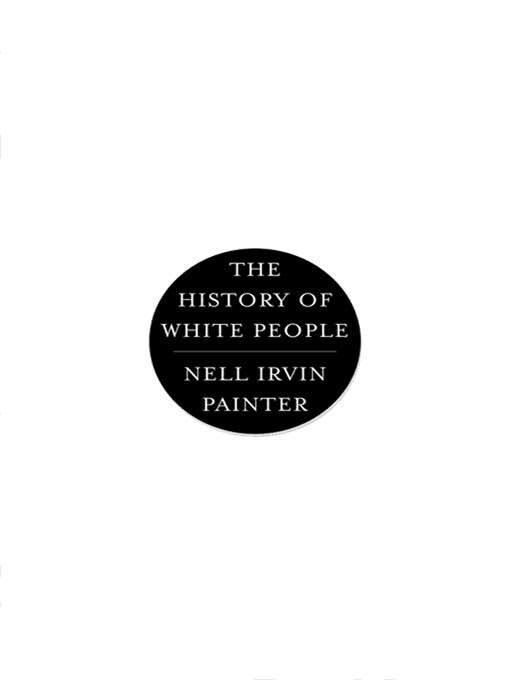7.8 /10 1 Votes7.8
Language English Pages 496 Originally published 15 March 2010 Page count 496 Country United States of America | 3.9/5 Goodreads ISBN 978-0393049343 Publisher W. W. Norton & Company | |||||||||||||||||||||||||||||||||
 | ||||||||||||||||||||||||||||||||||
Nominations NAACP Image Award for Outstanding Literary Work, Nonfiction Similar Nell Irvin Painter books, Social group books | ||||||||||||||||||||||||||||||||||
Nell irvin painter the history of white people
The History of White People is a 2010 book by Nell Irvin Painter. In it, Painter explores the idea of whiteness throughout history, beginning with ancient Greece and continuing through the beginning of scientific racism in early modern Europe to 19th- through 21st-century America.
Contents
- Nell irvin painter the history of white people
- Dr nell irvin painter the history of white people
- Overview
- References
Dr nell irvin painter the history of white people
Overview
Among the topics Painter discusses are the way in which formerly non-white groups were designated as white as they assimilated into American life, the racialization of intelligence and of political beliefs, and the relationship between race and conceptions of female beauty. Ralph Waldo Emerson is one figure whose belief in some of these racial theories is discussed.
“The History of White People” is Nell Irvin Painter's seventh book. Linda Gordon from The New York Times wrote, “The title of this book is literally accurate, because the book traces characterizations of the lighter-skinned people we call white today”. This book tells the history of white race theory and Ralph Waldo Emerson’s contribution. Chapter ten is dedicated to The Education of Ralph Waldo Emerson and the influence his Aunt Mary Moody Emerson (1774-1863) had on his education after the death of his father Reverend William Emerson. Aunt Mary introduced German romanticism and had great enthusiasm for the 1814 American edition of de Stael’s On Germany which was introduced to Emerson during his years of formal education. From the mid-1830s into the 1840s, transcendentalism (the American version of German romanticism) thrived in New England. In 1836, Emerson borrowed from transcendentalism’s emphasis on nature as a “spiritual force” to complete his essay Nature.
